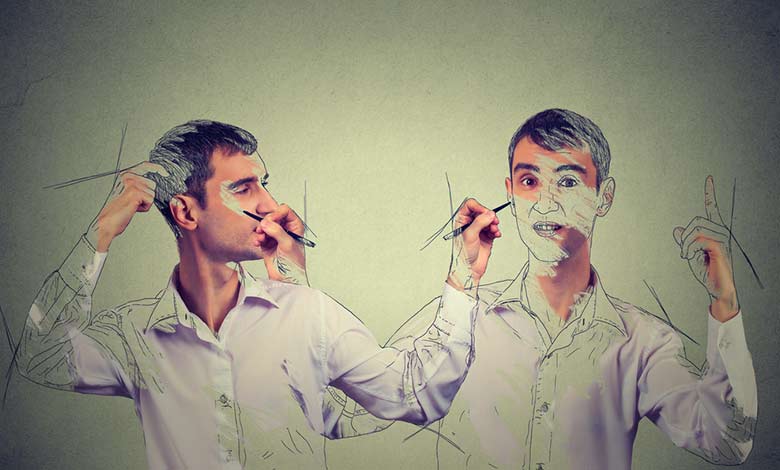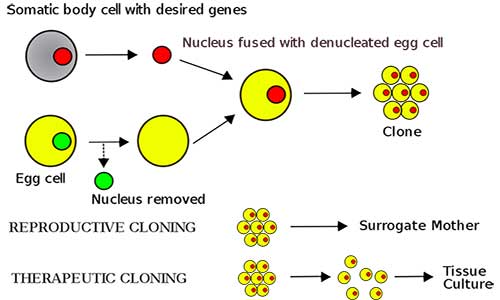
Cloning is the method of producing a genetically identical copy of a living organism. It can be done on many scales, from replicating basic DNA to a complete genetic copy. Human cloning is popular science fiction. Cloning involves creating a genetically identical copy of a living thing, but that copy doesn’t appear fully grown in a magical box. It has to start as we all do. As a fertilized egg develops in the womb, the clone baby grows at an average rate.
It happens naturally in about 0.3 percent of births producing identical twins. But those are looking numbers if we want to realize our dreams of galactic domination. What we need is artificial cloning. Research has made some pretty impressive inroads.
Could we clone humans?
Theoretically, human clone is possible, as the basic principles of cloning are understood and have been successfully applied to other animals. However, it’s important to note that human cloning raises numerous ethical, legal, and societal concerns, and significant scientific and technical challenges exist to overcome. There are two main types of cloning: reproductive cloning and therapeutic cloning.
Reproductive Cloning: This involves creating a cloned human being, producing a genetically identical copy of an existing individual. In animals, this has been achieved through somatic cell nuclear transfer (SCNT), where the genetic material from a donor cell is transferred into an egg cell with its nucleus removed. However, attempts to clone primates, including humans, have not been successful, and there are significant technical barriers to overcome before human reproductive cloning can be achieved.
Therapeutic Cloning: This type of cloning aims to produce embryonic stem cells for medical purposes rather than creating cloned individuals. It involves creating cloned embryos to harvest stem cells for research or potential medical treatments. Therapeutic cloning has been a subject of scientific research, but it is still a highly complex and controversial area.
Using a somatic cell nuclear transfer technique, genetic engineers take the nucleus’s DNA from one of the cells and inject it into an egg cell with its nucleus removed. The egg is implanted in the womb and develops using the genes and instructions in the transplanted nucleus to create an identical copy.
- Cloned human embryos are already being used for what’s known as therapeutic cloning to produce stem cells.
Those are compatible with the donor’s body to help treat diseases. It allows the human embryos to develop into living, breathing human copies is called reproductive cloning. It would help when prospective parents couldn’t produce their eggs and sperm or carry a recessive genetic disease.

In 1996, the sheep Dolly was born, the first mammal to be cloned in this way. As a result, she became the poster child for nuclear transfer and the basis of our hopes for future cloning efforts. Since then, scientists have cloned many other animals, including cats, dogs, horses, rabbits, and rats.
Japanese researchers have even produced clones from clones creating 26 generations of healthy mice totaling nearly 600 identical copies from a single individual. In making copies of living creatures, advanced techniques are being pioneered to cut and paste DNA to revive long-dead animals or even bring back extinct species.
- Scientists are attempting to use a method of genetic editing called CRISPR cas9.
To insert fundamental bits of wooly mammoth DNA recovered from 28 thousand-year-old frozen mammoth bodies into the eggs of elephants. Surrogate elephant mums then give birth to babies with all the physical attributes of mammoth-like coarse red hair and extra insulating fat, allowing them to survive colder conditions. With this firm scientific foundation, it would seem that we could soon see clones on every corner.
Cloning effects
The Oregon Health and Science University team made an embryonic clone from skin cells and donated eggs. Then they harvested working stem cells from that embryo. The technique they used is called somatic cell nuclear transfer. It’s the same way Dolly the Sheep was made. The nucleus of a mature cell, a fetal skin cell, is put into a human egg with its nucleus taken out. Then, they stimulate the egg, which starts to divide and grow.
When it hits about 100 cells, called the blastocyst stage, it has many embryonic stem cells that scientists can harvest. The stimulation is the hard part. Coaxing an embryo to grow quickly, consistently, and without complications has been the major roadblock to holdings CNT back. So how did the Oregon team make it work? Caffeine!
Adding caffeine to the chemical mixture used to stimulate cells divided properly every time. The cells they harvested from the embryos could be turned into everything. They tried to recreate, including beating heart muscle cells.
So, can we clone humans now with that embryo that has developed into a person? The team says no! They are using techniques they perfected on monkeys in 2007, and none of those embryos could survive into maturity.
Scientists have cloned a non-human primate. One of the biggest struggles with cloning primates is spindle proteins. They’re crucial in cell division and development. In humans, they reside in the nucleus of an egg. So, those spindle proteins are removed when the nucleus is removed to make room for the new DNA. It makes embryonic development that much harder.
Many cloned animals suffer from defective brains, hearts, livers, and immune system problems. Their chromosomes shrink quicker, meaning cellular aging happens faster than normal too. So clone could be sick and die prematurely, and the clone could have a completely different personality.
Humans cloning possibilities
For this reason, cloning could conceivably be seen as part of the fundamental human right to have children. But the other side of the story is much, much darker. If human cloning were on the cards, it could open Pandora’s box of moral and ethical dilemmas. Coning technologies could also pave the way for recreating copies of dead people, perhaps replacing a child after an accident or illness. It could be created solely for supplying organs and tissues.
Removing the original nucleus from the egg, for instance, is easier to do with some animals than others, easier with cats and mice, harder with dogs and rats, and hard for humans. Pulling the nucleus out also pulls out a bunch of proteins that are important for cell division.
Without these, the egg can’t develop beyond a single cell. These proteins are far enough from the nucleus for cats and mice to be less in the egg. But with humans, they’re so close that current techniques are not delicate enough to pick out one without the other.
Even if we did manage to do this and successfully transfer a nucleus to develop it into a cloned child. That child will not likely live an entire, healthy life until we can solve the problem of accelerated cell aging. Every time a cell divides, the ends of the DNA-containing chromosomes called telomeres shrink slightly.
After many divisions, they become so short that they cannot divide anymore, and the cell dies. It’s a natural process, but when you transplant a nucleus that’s already been through many divisions. So until we can find a way to extend telomeres and give chromosomes a new lease on life, human cloning problems will be moral and medical ones. So perhaps human cloning is a good way out of reach, and maybe that’s a good thing.
More Articles:
How To Bring Back The Extinct Animals?
New Genetic Information Evolve Process
Could We Control Human Overpopulation In The Future?
References:
Thomas, Isabel, “Should scientists pursue cloning?”
Haldane, J.B.S., “Biological Possibilities for the Human Species in the Next Ten Thousand Years.”
Lederberg Joshua, “Experimental Genetics and Human Evolution.”
Watson, James, “Moving Toward a Clonal Man: Is This What We Want?”
Park, Alice, “Researchers Clone Cells From Two Adult Men.”
Wood, Samuel H., “Development of Human Cloned Blastocysts Following Somatic Cell Nuclear Transfer with Adult Fibroblasts.”
